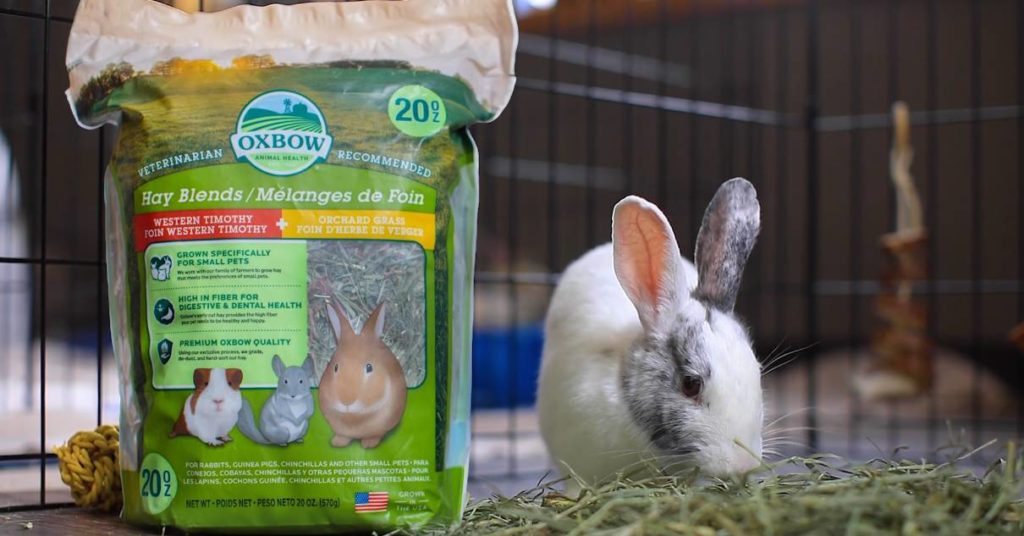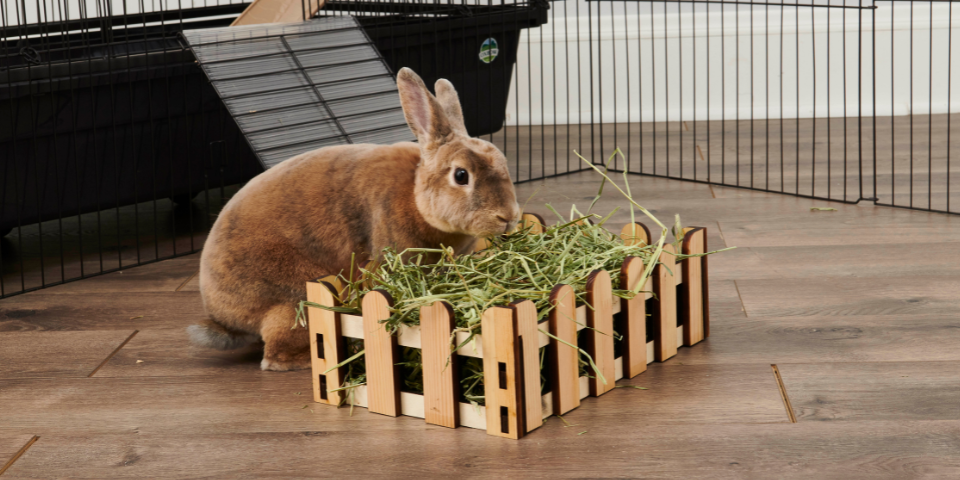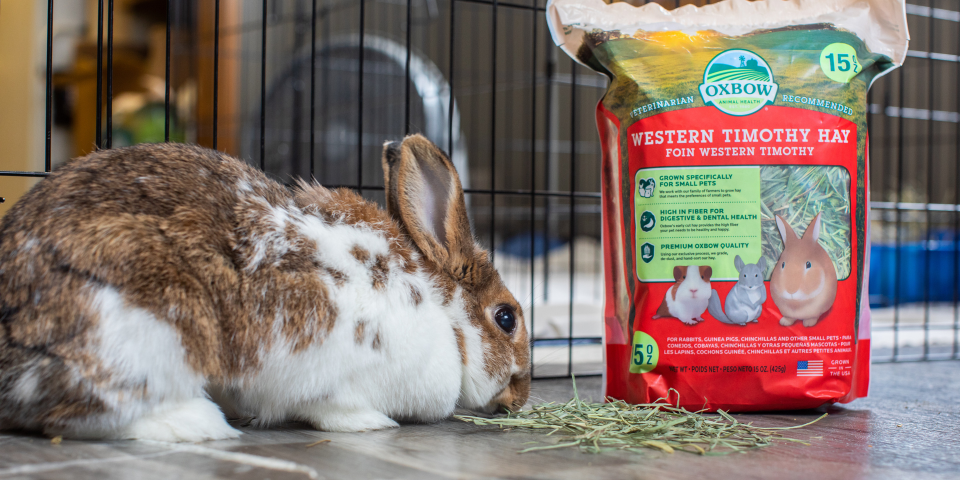As many rabbit pet parents know, some bunnies are pickier than others. This means some pet parents may need to get a little creative when it comes to feeding hay. Here are some of our recommendations to encourage hay consumption in the pickiest of rabbit friends:

Feed New Varieties Of Hay
It is possible for your pet to grow tired of eating the same kind of hay every day. Offering new types of hay opens your pet up to a variety of new tastes and textures to make mealtime exciting. We like to think of grass-hay varieties like apples; some may prefer the tart crunch of a Granny Smith, while others prefer the softer, sweeter nature of a Red Delicious, but at the end of the day, their nutritional content is nearly identical. Oxbow currently offers a variety of grass hays to cater to all kinds of pets’ different taste and texture preferences.

Mix Hays To Create A Custom Blend Just For Your Pet
Your hay mix can be as simple as combining two hays together, or can be more involved by including an appropriate serving of your rabbit’s favorite green or treat to make a “hay salad.” For a convenient mix, Oxbow offers Hay Blends, which is a mix of Western Timothy Hay and Orchard Grass Hay. Oxbow’s Organic Meadow Hay also contains a variety of different pet-favorite forages, such as orchard, timothy, brome, alfalfa, and clover.
Add Species-Appropriate Flowers & Herbs For Excitement
Adding some safe floral elements to hay can make a regular meal more enticing for your rabbit! For convenience, Oxbow’s Botanical Hay comes loaded with lemon balm, chamomile, lavender, and clover for a one-of-a-kind taste experience. As always, make sure to ask your vet what flowers are appropriate for your rabbit specifically.

Encourage Your Pets To Play With Their Food
Another way to increase hay consumption in your picky rabbit is to make it fun! Try stuffing hay into your rabbit’s favorite natural chew to make a fun and challenging puzzle. Play hide and seek by hiding your rabbit’s favorite food in their habitat. The added mental stimulation might help stimulate your rabbit’s appetite.

Change Up Your Pet’s Hay Feeder
If your pet has a hay feeder, consider changing up how you offer hay. Some hay feeders aren’t comfortable or efficient for rabbits to use at all times, or might provide too much of a challenge for your pet. You can try a new hay feeder, or even go without one for a day or two, and monitor for any changes of your pet’s eating habits.
Always Transition From Bag To Bag
Make sure the hay and pellets you regularly feed your rabbit are transitioned properly from bag to bag, even if the type of hay and pellets are the same. Your rabbit can recognize even the most subtle, natural differences in scent or taste from one bag of food or hay to another. When not transitioned properly, our pickier furry friends often are not keen on these differences, and they sometimes reject their food or hay even if it’s a variety they have always loved.
If your rabbit has suddenly stopped eating or is showing signs of sickness (such as lethargy, hunched posture, or abnormal fecal shape/size/output) they need to be seen by an exotics veterinarian as soon as possible. GI Stasis is a very serious illness that small herbivores like rabbits can face if they refuse their hay for a long period of time.

As hindgut fermenters, rabbits need a near-continuous input of fiber to keep their digestive tract running smoothly. If rabbits stop consuming adequate volumes of fiber (i.e. hay), their gastrointestinal system slows down, and if left untreated, can completely stop moving. GI Stasis is a painful medical emergency, and can quickly claim the life of your beloved pet if not addressed immediately. The sooner your pet can get to a qualified professional for diagnosis, the better the odds your pet will make a full recovery.
